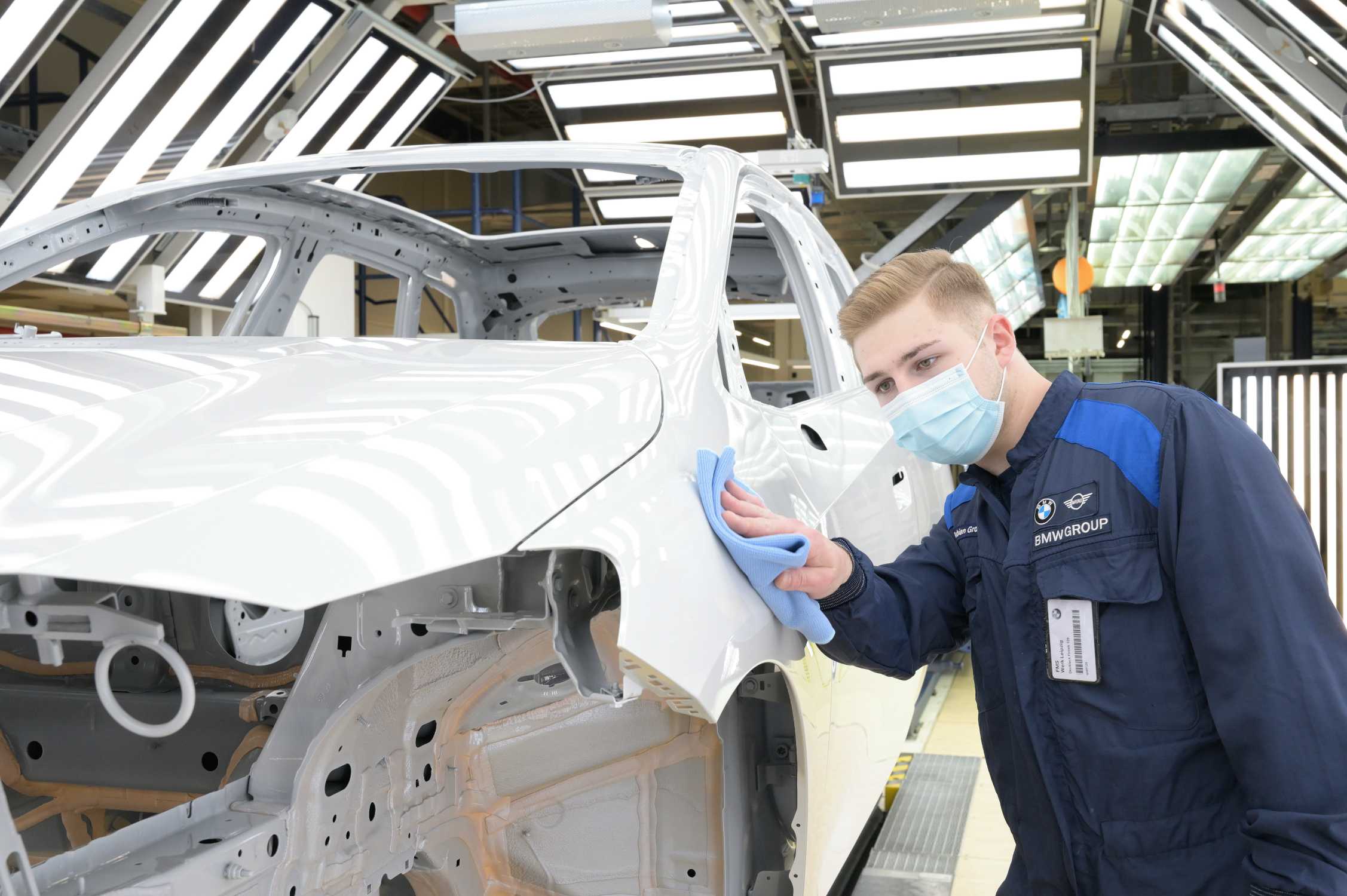Munich. BMW Group continues to reduce CO emissions2 emissions across its supplier network as part of its ambitious ongoing sustainability activities. Steel produced from natural gas or hydrogen and green energy, instead of fossil resources like coal, is a key contributor to this. The BMW Group has now signed a corresponding agreement with Salzgitter AG for the supply of low-carbon steel. The steel will be used in standard car production at the BMW Group’s European plants from 2026. With this decision, the BMW Group is expanding its supply of low-carbon steel to two suppliers. The aim is to use low carbon steel to meet more than 40% of the demand of its European factories by 2030, thus reducing CO emissions2
up to 400,000 tonnes of emissions per year.
“This is an important step in the substantial reduction of CO2
source emissions in the supplier network,” said Joachim Post, BMW AG Board Member responsible for purchasing and supplier network. “Our goal is to reduce the lifecycle carbon footprint of vehicles through a holistic approach. With steel in particular, we are leading the way in sourcing low carbon steel for our factories in Europe in the future.
“Salzgitter AG places ‘circularity’ at the center of its new strategy,” said Gunnar Groebler, CEO of Salzgitter AG. “We firmly believe that closed loops of recoverable materials can only achieve their full effect with strong partners. We look forward to the circular economy cooperation with the BMW Group and the agreement to supply green steel to our long-standing customer. Partnership for transformation – this is how we will translate our new corporate vision into practice. »
Agreements with two suppliers on low carbon steel will meet more than 40% of steel demand in European factories
The BMW Group already signed a deal with Swedish startup H2 Green Steel in October last year. H2 Green Steel will supply BMW Group’s European factories with steel produced exclusively from hydrogen and green energy from renewables from 2025. This process will reduce CO2 emissions of about 95%.
Together, the two agreements will supply more than 40% of the steel required by the company’s European factories and save around 400,000 tonnes of CO2 emissions per year. BMW Group press plants in Europe process more than half a million tonnes of steel per year.
Gradual transition to low carbon steel production
Due to its energy-intensive manufacturing process, steel production generates a lot of CO2 emissions. However, due to its versatility, steel is one of the most important materials for automotive production and will continue to represent much of the bodywork and many components.
To reduce CO2 emissions from large-scale steel production, Salzgitter AG is gradually shifting to virtually carbon-free production. Electricity of renewable origin and its use in the production of hydrogen by electrolysis are key elements of the transformation. This green hydrogen will replace the coal currently used in the conventional blast furnace process. This is made possible by so-called direct reduction plants, which use hydrogen to directly reduce iron ore to solid-state iron. The solid iron thus produced is then smelted with scrap metal in an electric arc furnace powered by renewable electricity.
Salzgitter AG plans to use this method to gradually reduce CO2 emissions from steel production to around 5% of what they were originally.
The closed loop conserves resources and reduces CO emissions2 emissions
More than five years ago, the BMW Group already established a closed-loop material cycle for steel sheet waste from the BMW Group plant in Leipzig together with Salzgitter AG. After delivering steel coils to the factory, Salzgitter AG removes leftover steel of the type produced in press mills, for example, when doors are punched, and uses this material to produce new steel . This steel is then supplied to BMW Group factories. In this way, raw materials can be used multiple times in a circular economy, thus conserving natural resources.
Scrap steel sheets from the BMW Group’s other European factories are also either reused via a direct material cycle or sent back to the steel producer via steel traders and processed into new steel.
Using secondary steel from the circular economy reduces CO emissions2 emissions
Up to a quarter of the steel in BMW Group vehicles already comes from recycling channels. The BMW Group plans to increase its percentage of secondary steel in stages, reaching up to 50% by 2030.
Since this requires much less energy, CO2
emissions from secondary steel production are on average 50-80% lower than those from primary steel.
Investing in startups accelerates the development of new technologies
In addition to sourcing low-carbon steel, the BMW Group has also invested in an innovative method of carbon-free steel production developed by US startup Boston Metal, through its venture capital fund, BMW i Ventures. Boston Metal uses electricity for its new technology which, by means of an electrolysis cell, produces molten iron which is then transformed into steel. If electricity from renewable energies is used for this process, the steel production is carbon-free. Over the next few years, Boston Metal plans to expand the new method of steel production on an industrial scale.
Through its investment in start-ups, the BMW Group aims to accelerate the development of new technologies, promote competition and provide an impetus that will facilitate the entry of young companies into the market. Innovative technologies provide better, more sustainable and more efficient access to raw materials.
Investing in new technologies is one of the many measures taken by the BMW Group to achieve its ambitious goals for the steel supply chain – for example, by making low-carbon production an important award criterion for each contract.

